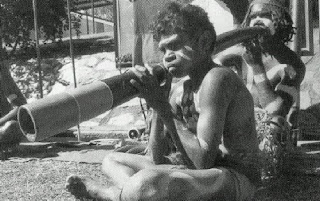I am enthralled, enraptured and enchanted by Jay Griffiths's "Wild: An Elemental Journey". Within, she documents her time spent in regions of wilderness, poetic prose metaphorically binding emotional sentiment and scientific precision along the way. She travels from the Amazon to the Arctic, Oceana to Outback constantly striving to define wilderness as interpreted by indigenous populations: "self-willed land does what it likes, untilled untold, a place and a whole way of being that has its own internal rules and habits." In particular she finds that the lives of those intertwined with wild spaces have laws under the guise of "myths and magic, tales and enchantments that make up a society's culture; ecologically informed, emotionally charged and morally binding".
Music plays a strong role in the interpretation of natural spaces. Canadian composer and environmentalist, R. Murray Schafer coined the term soundscape, music to reflect the sensation of immersion in an acoustic environment. The “Listening” of Cree Indians, and the “Dreaming” of Aboriginals permit the creation of Songlines, inspired by the voices of the wind, trees, rocks and animals, and the trails of their spirits. These pieces of music describe the lie of the land to such an extent that people upon hearing songlines are said to comfortably navigate unknown territories, not unlike reading a map. “The Dreaming is inside the land, latent as a dream lies in sleep”. Furthermore, by mapping the soul of a landscape, they reveal the past when development comes to desecrate natural spaces: “We still see the land. Beneath the concrete we know where the forest grows, where the kangaroos graze. We see where the Platypus digs her den, where the streams flow. That city there... it’s just a scab. The land remains alive beneath it.”
Amongst the Dreamtime work of artists at the Quai Branly in Paris lies a small, dark, and usually neglected room, but which to me is the strongest part of the whole museum. This "music box" combines sound spatialisation which the projection of immersive images; the vivid green of a rainforest in Equador accompanied by the ululation of village women. The lure of the hymnal music transports you far away, and upon arrival you feel a sensation of having been here before.



No comments:
Post a Comment